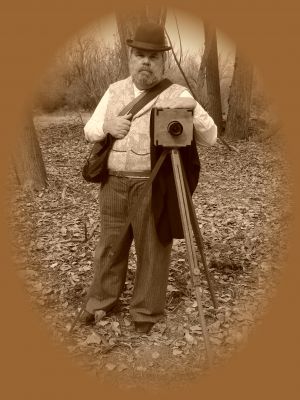With the development and diffusion of glass-plate photography around the middle of the Nineteenth-century, came the first real opportunity for the average citizen to be a consumer of this revolutionary new technology.
Earlier photographic systems, including the famous Daguerreotype, produced their image directly on the final medium. This meant that only one "print" could be obtained from each captured image. Glass-plate negatives allowed multiple prints to be made on specially-prepared paper using a second photographic process.
 An early form of consumer-oriented photography was the "Carte de Visite" (CDV), a photo calling card which became so popular in both the United States and Europe that purpose-designed cameras were built to record multiples of the small images on a single glass plate negative. The typical CDV was around two and one-half inches wide and four inches high. It consisted of a piece of stiff cardstock upon which was glued a slightly smaller albumen photo print. Occasionally, the cardstock base was decorated with a printed border or some other embellishment.
An early form of consumer-oriented photography was the "Carte de Visite" (CDV), a photo calling card which became so popular in both the United States and Europe that purpose-designed cameras were built to record multiples of the small images on a single glass plate negative. The typical CDV was around two and one-half inches wide and four inches high. It consisted of a piece of stiff cardstock upon which was glued a slightly smaller albumen photo print. Occasionally, the cardstock base was decorated with a printed border or some other embellishment.A CDV sent by mail proved to be a easy and inexpensive way for people to "show their face" to friends and family living in a distant city or town. Before long, collecting CDV became a hobby unto itself and albums for storing and displaying these little cards were produced commercially. It is reported that even Britain's Queen Victoria was an avid CDV collector.

No comments:
Post a Comment